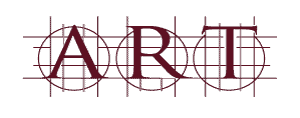Definition
X-ray Inspection is a non-destructive testing process used in electronics manufacturing to examine components and assemblies. This method employs X-ray technology to reveal internal structures, such as solder joints and connections, without damaging the product. It is crucial for ensuring the quality and reliability of electronic devices, particularly in complex assemblies like printed circuit boards (PCBs).
How It’s Used in the Industry
In electronics assembly, X-ray Inspection is applied during various stages, particularly after soldering and before final assembly. Technicians use X-ray machines to scan PCBs, allowing them to identify defects such as voids in solder joints, misaligned components, or hidden connections. The process typically involves placing the PCB on a conveyor belt, where it passes through the X-ray system. The resulting images help technicians assess the integrity of the assembly. This is essential for both trainees, who learn to identify faults, and experienced professionals, who rely on it for quality assurance and compliance with industry standards.
History & Origins
X-ray Inspection became common in electronics manufacturing in the late 20th century, particularly as the complexity of electronic assemblies increased. Early adoption began in the 1980s, with advancements in X-ray technology making it more accessible. The development of standards, such as those from IPC (Institute of Printed Circuits), further solidified its importance by establishing protocols for quality control. Over the years, improvements in imaging technology and software have enhanced the capabilities of X-ray inspection, making it a vital tool in the industry.
Variations
There are several variations of X-ray Inspection, including 2D and 3D imaging techniques. 2D X-ray provides flat images of the assembly, while 3D X-ray allows for a more detailed view of internal structures and can reveal hidden defects more effectively. Compared to other inspection methods, such as optical inspection, X-ray offers the unique advantage of visualising internal features, making it particularly suitable for complex assemblies where traditional methods may fall short.
Modern Applications
Today, X-ray Inspection is widely used in electronics production and repair, especially for surface mount and through-hole technology. It plays a critical role in ensuring the quality and reliability of electronic devices by detecting defects that could lead to failures. Additionally, X-ray inspection is vital for compliance with IPC standards, as it helps manufacturers maintain high quality in their products. In professional training, it provides learners with hands-on experience in identifying and resolving potential issues in electronic assemblies.
Practical Tips & Training
When working with X-ray Inspection, it’s essential to follow safety protocols, such as wearing protective gear and ensuring proper shielding around the X-ray equipment. Familiarity with inspection techniques, like interpreting X-ray images, is crucial for effective analysis. Investing in structured training and certification is highly recommended, as it enhances understanding and skills in using X-ray technology, ultimately contributing to better quality control in electronics manufacturing.


